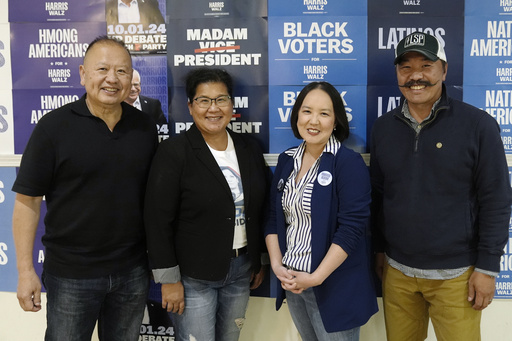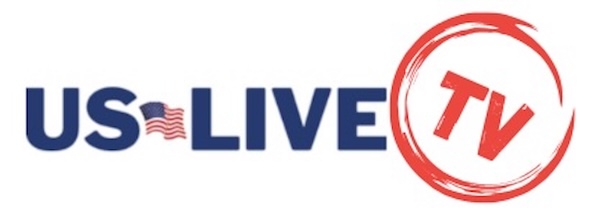Janssen Hang, who is the co-founder and executive director of the Hmong American Farmers Association in Minnesota, has had multiple interactions with Governor Tim Walz, typically while they are on farmland, with Walz frequently sporting his signature red flannel shirt.
“I’ve seen that red flannel multiple times,” Hang remarked with a chuckle. “I think he will be a wonderful candidate because he speaks from the heart… He’s not a third-generation senator’s son or some big business guy.”
Recently, Hmong Minnesotans have observed as Walz ascended to the Democratic presidential ticket alongside Vice President Kamala Harris, an event that occurred two months ago. They’ve seen him traverse the nation and debate Republican Senator JD Vance from Ohio.
Local Hmong American lawmakers and community leaders believe that Walz has established a largely favorable standing among Minnesota’s biggest Asian ethnic community. They highlight his past legislative efforts, his readiness to engage with different political factions, and his participation in various local events—ranging from festivals to funerals. This sense of community support is now pushing many in the Hmong American population to mobilize their vote in pivotal states.
Despite his acclaim, Walz also faces criticism from some Hmong individuals who claim he has not done enough to safeguard small businesses, particularly following the protests and unrest following the death of George Floyd in Minneapolis. Yet, as one of the nation’s fastest-growing voting demographics, the alliances Walz has formed with Hmong voters might significantly influence outcomes in swing states like Wisconsin and Michigan. The local community’s enthusiasm appears to have surged with Walz’s candidacy.
“It’s possible that the next vice president knows Hmong culture and can pronounce Hmong correctly,” noted KaYing Yang, a member of President Joe Biden’s Advisory Commission on Asian Americans. “Even with our community spread throughout the nation, we remain interconnected.”
Census data reveals that California has the largest Hmong population at over 107,000, while Minnesota and Wisconsin follow closely with populations of more than 97,000 and 58,000 respectively. North Carolina and Michigan complete the top five states with notable Hmong communities.
The Hmong presence in the U.S. extends back to the 1970s, when many fled persecution in China and sought refuge in Southeast Asia. During the Vietnam War, the CIA enlisted Lao and Hmong individuals into “Special Guerrilla Units,” which fought communism in Laos, resulting in considerable casualties. Many eventually settled in places like Minnesota, Wisconsin, and central California. Today, an estimated 300,000 Hmong people reside in the United States.
In Minnesota, the influence of the Hmong population has gained recognition from Walz and other officials. Hmong farmers provide over 50% of the produce in around 50 farmers markets in the Twin Cities area. In 2022, a historic moment occurred when these farmers were awarded $2 million by the state to buy the farmland they had been leasing, a process that Hang noted Walz was crucial in supporting through bipartisan state funding.
Additionally, Walz and other leaders have made efforts to honor Hmong war veterans. Minnesota State Representative Fue Lee worked with Walz to establish May 14 as Hmong SGU Remembrance Day, commemorating the date when U.S. forces exited Laos in 1975, which turned Hmong soldiers into refugees.
“The governor takes time to know you personally,” commented Lee. “That’s how he impacts many Hmong community members that I have talked with regarding his candidacy.”
On the other side, May Lor Xiong, a Minnesota Republican running for Congress in a predominantly Democratic area, doubts Walz’s sway over Hmong voters in other states, criticizing his performance regarding small business support and leadership during the COVID-19 pandemic and civil protests. She pointed out issues like homelessness and public safety as areas where she believes Walz has fallen short. “It’s just about photo ops, and that’s all it is,” Xiong stated regarding Walz’s interactions.
The Harris-Walz campaign is actively focusing on engaging the Hmong community, alongside other Asian demographics, by increasing staffing and providing materials in various languages.
“Vice President Harris and Governor Walz have championed issues important to Asian American communities—from investing in the middle class and supporting small businesses to ensuring community safety and freedom,” commented a campaign spokesperson for voter engagement among Asian Americans, Native Hawaiians, and Pacific Islanders.
In contrast, officials from the Trump-Vance campaign argue that significant progress was made for Asian Americans during Trump’s presidency. “No one has been a stronger advocate for the AAPI community than President Trump, who fostered an environment of diversity, equal opportunity, and prosperity,” said a senior advisor from the campaign.
Given their collective culture, the Hmong community operates within a structure of 18 clans. Supporters of Walz and Harris are keen to harness connections with clan leaders to encourage voting among older generations. Some clan heads plan to engage with Hmong volunteers at an upcoming Harris campaign phone bank event later this month, shared Gaochi Vang, a co-chair of Hmong Americans for Harris based in Madison, Wisconsin.
Research shows a significant wealth disparity between Hmong individuals and other Asian American communities, which poses a challenge in reaching potential voters who may feel neglected or disheartened. Yet, Vang believes that Walz’s positive history within the community could play a role, although it’s crucial that the message resonates through trusted figures.
“It’s essential for our elders to hear from someone they view as a respected leader, akin to their peers,” Vang emphasized. “Reinforcing the power of their voice could be pivotal, as their votes could indeed sway outcomes in Wisconsin.”
Xiong contends that many Hmong voters lean conservative on several issues, such as reproductive rights and gender identity. “They hesitate to express their views for fear of backlash,” she explained. “I often hear from many who affirm, ‘We vote Republican. We see the issues in our state… and nothing has changed.’”
In contrast, Democratic state Representative Kaohly Vang Her notes that affiliation with any political party is not particularly strong among most in the Hmong community. “Earning the Hmong vote is a continuous effort,” Her affirmed. “The community needs assurance that you’re not merely performative, that you understand their needs, and are committed to advocating for them.”




